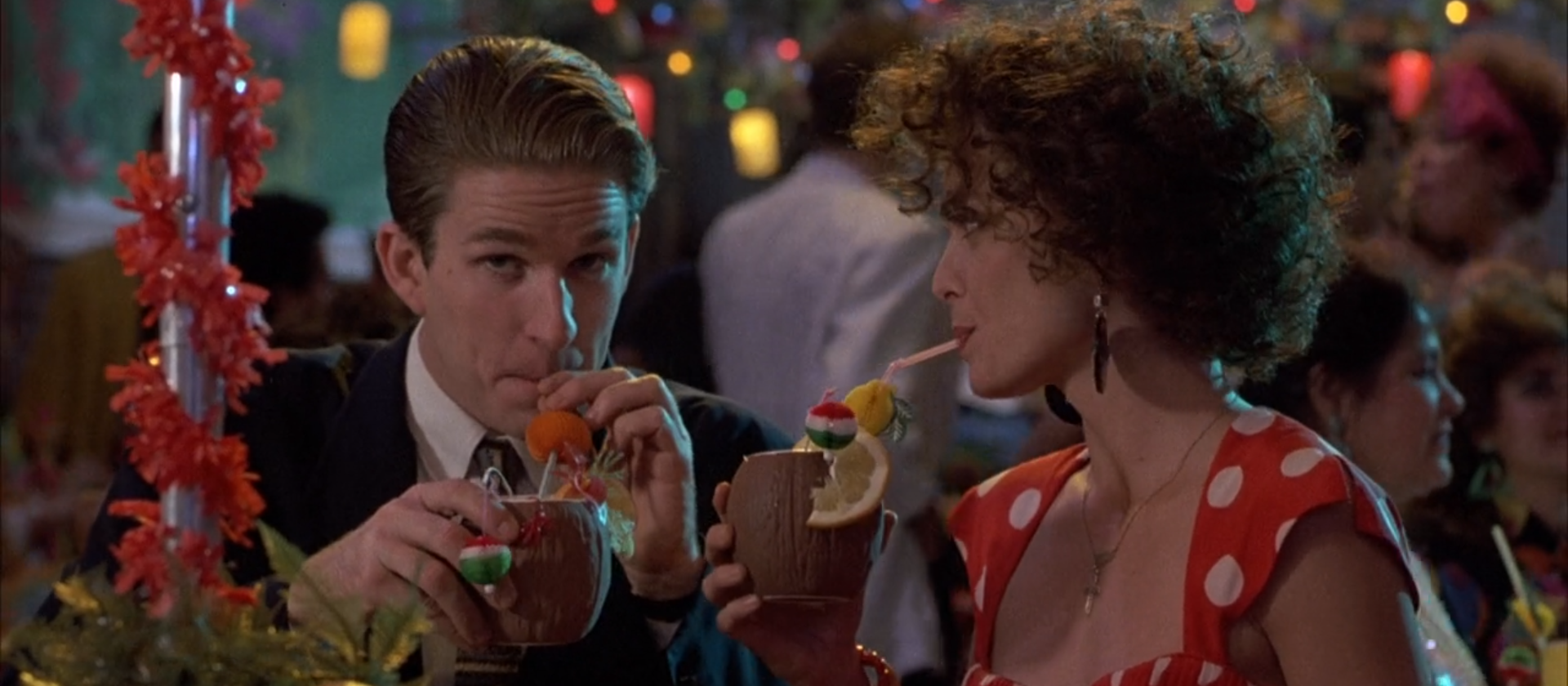
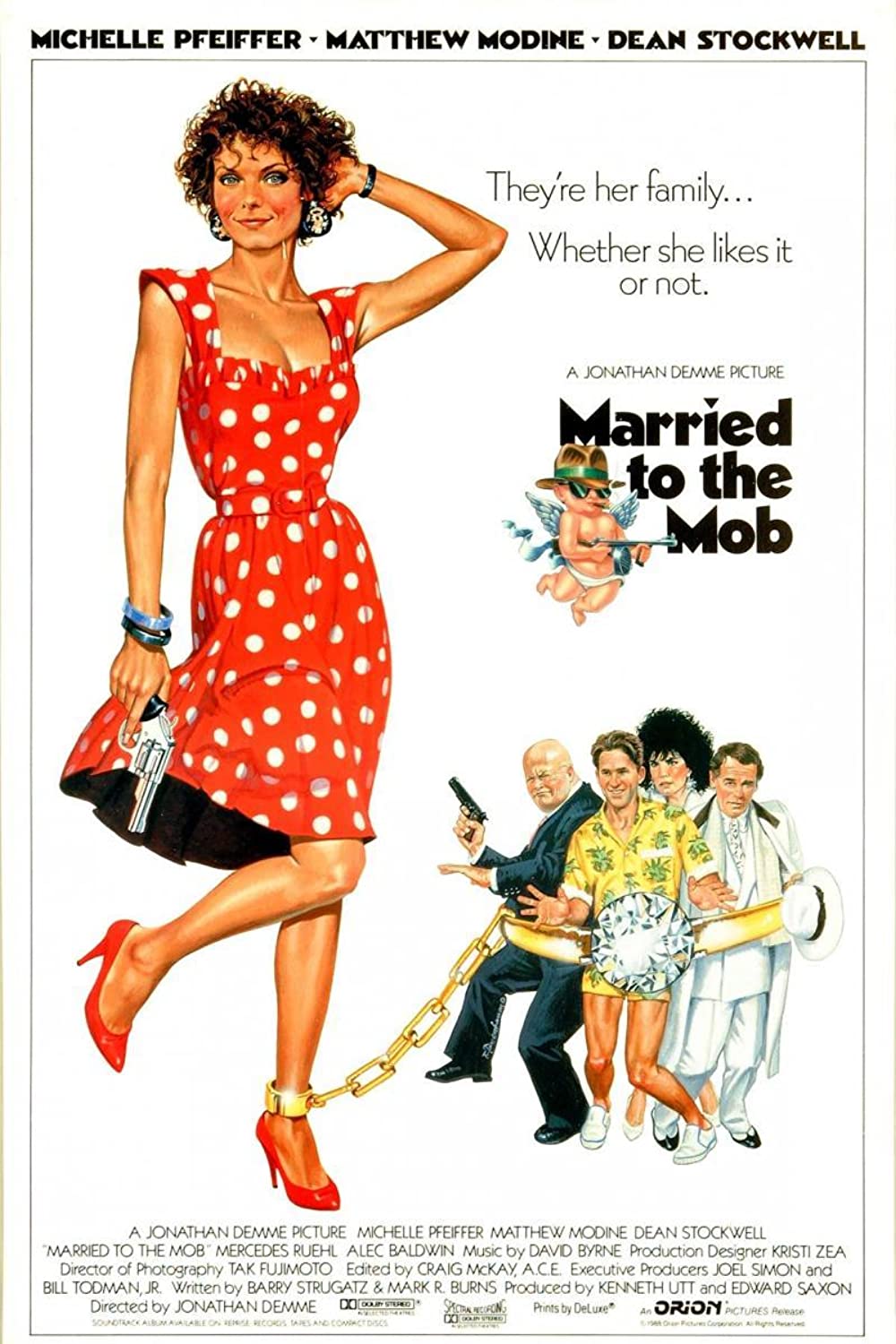
“God, you people work just like the mob! There’s no difference.”
“Oh, there’s a big difference, Mrs. de Marco. The mob is run by murdering, thieving, lying, cheating psychopaths. We work for the President of the United States of America.”
When gangster Frank “The Cucumber” de Marco (Alec Baldwin) is knocked off by his kingpin boss, Tony “The Tiger” Russo (Dean Stockwell), for balling the man’s mistress on the sly, his widow Angela (Michelle Pfeiffer) uses the occasion as impetus for turning over a new leaf. She gathers up her son and a few meager personal items, donates the rest of her family’s ill-gotten belongings to charity, and moves from their luxurious Long Island home to a derelict hidey-hole on the Lower East Side with a bathtub mysteriously located in the kitchen. But neither Russo nor inept FBI Special Agent Downey (Matthew Modine) will leave her to pursue her new life; Russo because he wants to possess her even though his myriad extramarital conquests have turned his wife Connie (Mercedes Ruehl) into a vengeful maniac, Downey because he suspects that they are already romantically involved and sees an opportunity to bring down the mobster. Russo plies Angela and her boy Joey (Anthony J. Nici) with gifts and amorous sweet talk, while Downey, a supreme weirdo who uses a Wallace and Gromit–like contraption to put his pants on as he gets out of bed in the morning and has no business being an FBI field agent, accidentally fumbles his way into becoming Angela’s rebound while posing as a plumber who lives in her building, leading to all manner of escalating madcap hijinks in the mold of the great screwball comedies of the ‘40s.
Written by first-timers Barry Strugatz and Mark R. Burns, the story of Jonathan Demme’s farcical mafia satire Married to the Mob doesn’t really work from a dramatic standpoint. It tries to do too much all at once; to weave together cold blooded gangland shootouts, a satirical take on the pampered lifestyles of mafia wives, a quirky, shape-shifting romance, an Alice Doesn’t Live Here Anymore–style story of a woman and son seeking out a fresh start, a scorned wife on a comedic rampage, a behind-the-scenes caricature of federal intelligence agencies—on paper, the jagged edges are in abundance.
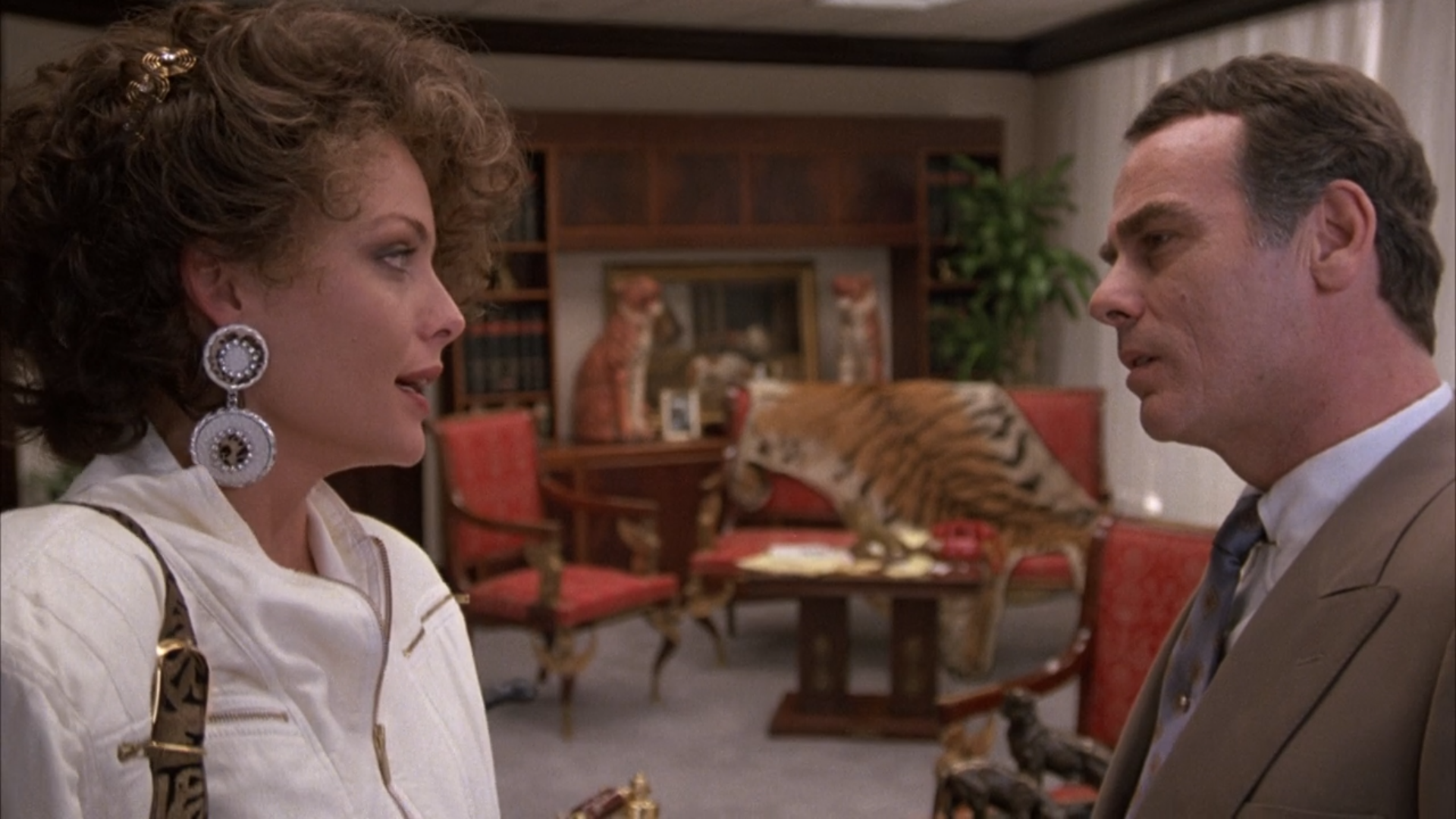
However, the fact of the story’s incongruity does little to blunt the film’s impact, which owes much more to its character details, Demme’s spirited direction, and the tongue-in-cheek performances than to the inanities of its narrative. Most prominent is Demme’s instinctive feel for music, which incorporates a score from personal friend and Talking Heads’ frontman David Byrne alongside a diverse soundtrack that features reggae, new wave, mambo, garage rock, synthpop, and Q. Lazzarus’s ‘Goodbye Horses’, which the director would reuse a few years later to great effect in The Silence of the Lambs.1 On top of all that, there’s an abundance of diegetic music tucked into interstitial sequences, elevating otherwise benign transitions into sublime territory: an improv performer at a dinner lounge who adjusts his performance when made aware of Tony’s presence, a group of scat singers belting in the streets who Downey joins to remain hidden in plain sight, a spoon-playing busker who continues percussing while holding a conversation with Angela, a carefree samba concert, and so on. There’s even a recurring bit where gangsters sing the chintzy jingle of a fast food joint.
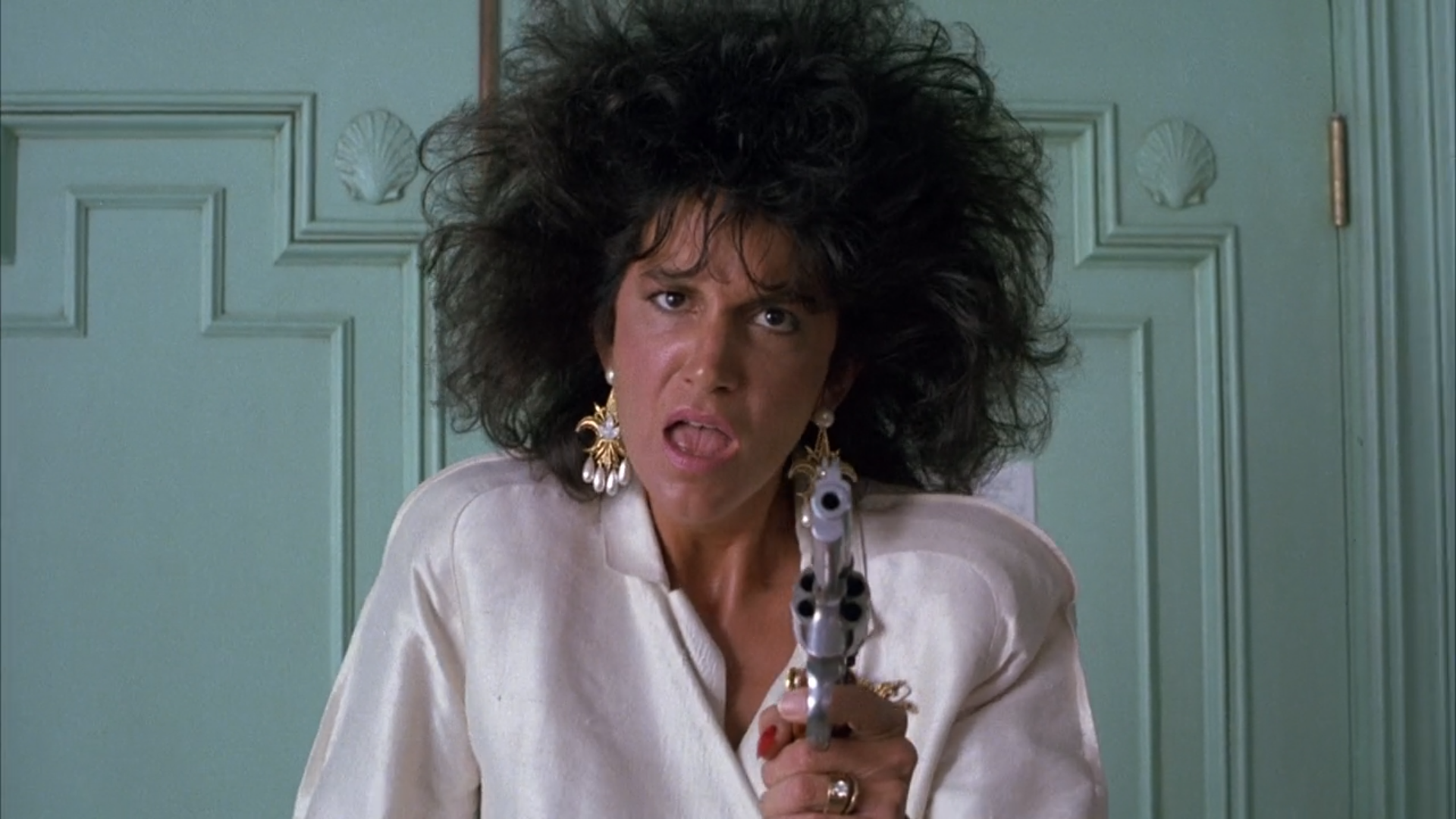
The fries are crispy,
The shakes are creamy,
The Double Continental with cheese is dreamy.
Drive up to the clown,
It’s a Burger World town!
If Demme’s soundtrack is a veritable smorgasbord of musical styles and methods of implementing them, then his mise en scène is a similarly giddy free-for-all of tchotchke Americana—idiosyncratically garish sets and tacky costumes that range from medieval- and chicken-themed restaurants to stuffed tigers and mannequins, from gaudy jewelry to toy laser guns, from sleazy honeymoon suites to Rastafarian hair salons, from big ‘80s hair to Etch a Sketches and coconut shell pina coladas and drive-thru workers dressed as clowns, all lensed with verve by Tak Fujimoto. Against this lively backdrop the colorful cartoon characters appear right at home with their eccentricities, the one-scene character actor appearances feel natural,2 and the mismatched performance styles do not result in disharmony. Where else can a warm-hearted character study of a single mother adjusting to a new situation be intertwined with the screwball antics of a klutzy FBI agent? Note the exquisite sequence where Angela works up the gumption to ask Downey, alias Mike Smith, on a date. She knocks on his door clad in a t-shirt emblazoned with a T-rex in a propeller hat. Her proposition is interrupted by her son who arrives on the scene wearing a fuzzy caveman costume, asking about the fate of the dinosaurs. Angela, clearly petrified that her son has spoiled her chances, looks on, tickled, as Downey kneels down and explains the timeline of dinosaurs and humans using a metaphor. Meanwhile, Downey’s partner Benitez (Oliver Platt) is literally two feet away, hiding behind the door mouthing instructions to the gawky romantic.
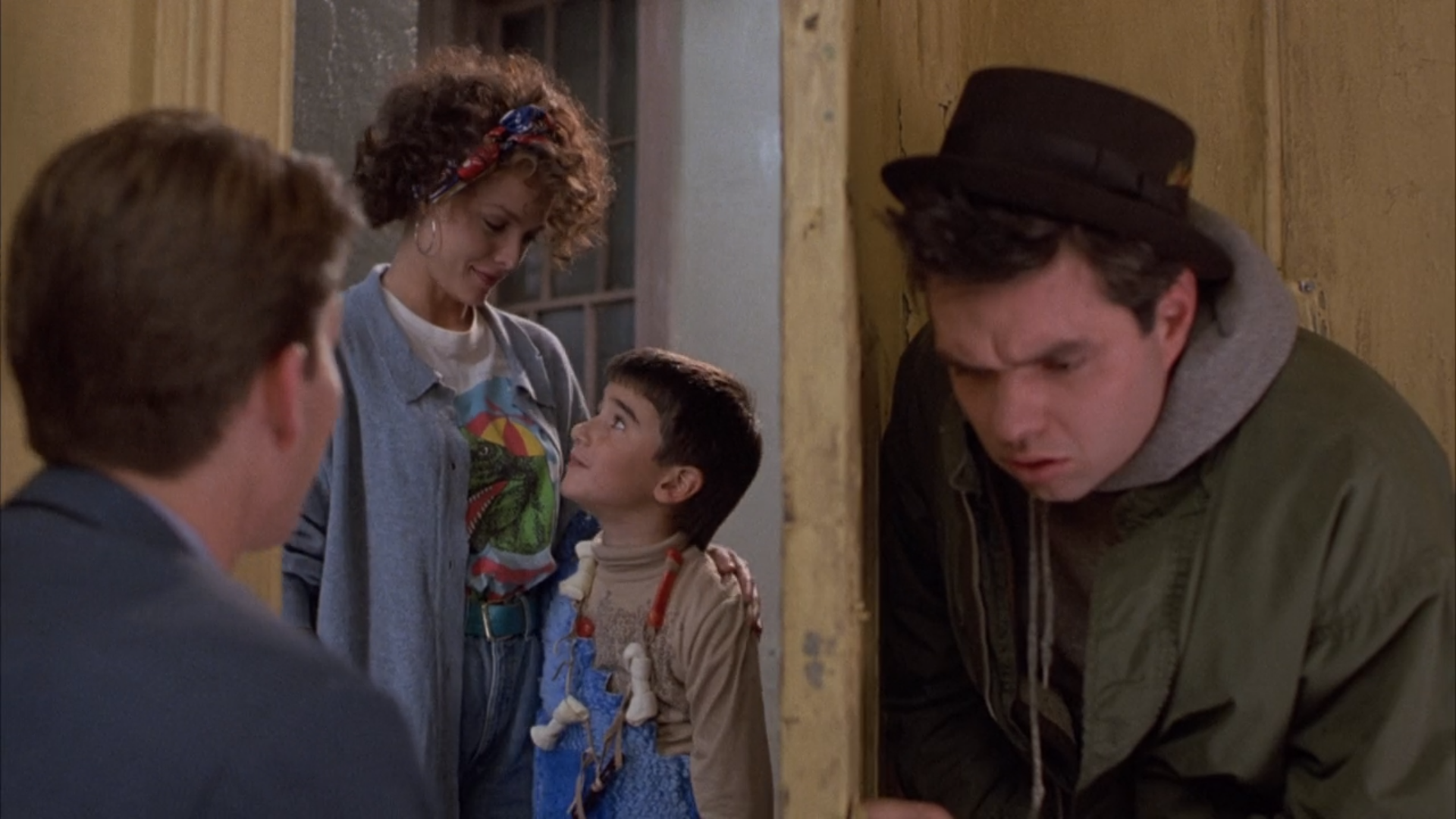
As various genre stylings and cultural bric-a-brac are whipped up into a tacky extravaganza, an organic soulfulness arises that does not depend on any single joke or story beat, as Demme’s supple direction and breakneck pacing bend and accede to each vibrant whimsy, somehow transforming schematic fluff into something bordering on the meaningful. It’s an overdose of cinematic jubilation that revels in the act of combining sound and image to explore humanity at its outlandish extremes. And if it’s a little step down from the dizzying euphoria of Something Wild—of which it often feels like a thematic and stylistic redux minus its undercurrent of true menace—that’s no big thing at all; it’s still better than most comedies and contagiously joyful as it goes about its the business of lightweight entertainment.
1. If you’re into any of the scenes that Demme draws from, you’re bound to recognize some of his selections. But a few of these are super deep cuts. One song called ‘Queen of Voudou’ appears to be the only release that the band Voodooist Corporation ever put to wax.
2. The supporting cast here is truly the stuff of dreams: Sister Carol East, Joan Cusack, Tracey Walter, Charles Napier, Chris Isaak, Paul Lazar, David Johansen, Obba Babatundé, Ellen Foley, Al Lewis, O-Lan Jones, among many others who pop up for a moment or two.